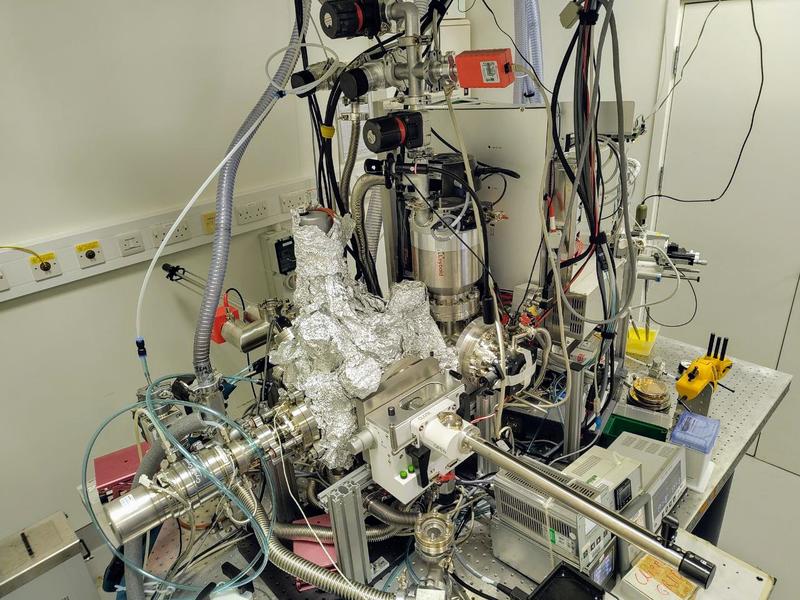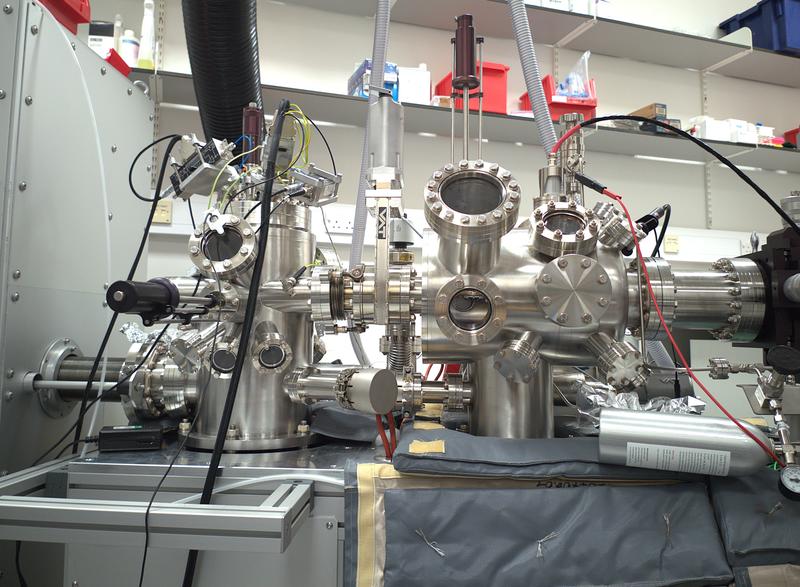1. The Lab
The ESIBD and SPM Lab, led by Stephan Rauschenbach, has been part of the Kavli Institute for Nanoscience Discovery since 2022-2023, following its relocation from the CRL Chemistry Lab at Oxford University. Our laboratory is dedicated to the exploration and advancement of nanoscale phenomena, utilizing a suite of specialized instrumentation to address complex scientific challenges at the molecular and atomic levels.

A wide view of the lab, featuring the SPM in the foreground and the ES-IBD in the background
2. ESIBD Instrumentation
Electrospray Ion Beam Deposition (ESIBD) Setup
Our Electrospray Ion Beam Deposition (ESIBD) system enables the transfer of large, non-volatile molecules into the gas phase and their subsequent deposition onto surfaces under ultra-high vacuum conditions. This technique is particularly useful for preparing samples of biomolecules, such as proteins and nucleic acids, for surface analysis.
Orbitrap UHMR Mass Spectrometer
Integrated with the ESIBD system, the Orbitrap UHMR (Ultra-High Mass Range) Mass Spectrometer allows for high-resolution mass analysis of large biomolecular assemblies. This instrument is capable of analyzing intact protein complexes and nucleic acid assemblies, providing insights into their composition and structural integrity.

The ESIBD setup (covered by aluminium foil) and the commercial mass spectrometer Orbitrap UHMR in the back (behind the middle white panel)
3. Cryo-EM
We utilize ESIBD to prepare samples for Cryo-Electron Microscopy (Cryo-EM) by depositing purified biomolecules onto cryo-EM grids. This approach facilitates the imaging of proteins and complexes in their native states. A notable application includes the preparation of β-galactosidase samples, which were successfully imaged at 2.6 Å resolution, demonstrating the method's efficacy in preserving structural details. These samples are imaged at the COSMIC Facility.
4. SPM
Combining ESIBD with Scanning Probe Microscopy (SPM) techniques allows for the detailed examination of molecular structures on surfaces. Deposited samples can be analyzed using our Scienta Omicron Infinity LT-UHV STM/nc-AFM, which operates at temperatures as low as 8.5 K. This setup is equipped with qPlus sensors, enabling both Scanning Tunneling Microscopy (STM) and Non-contact Atomic Force Microscopy (nc-AFM). Such capabilities are essential for studying the electronic and structural properties of individual molecules and assemblies .

Omicron Infinity LT-UHV STM/nc-AFM equipped with qPlus® Sensor